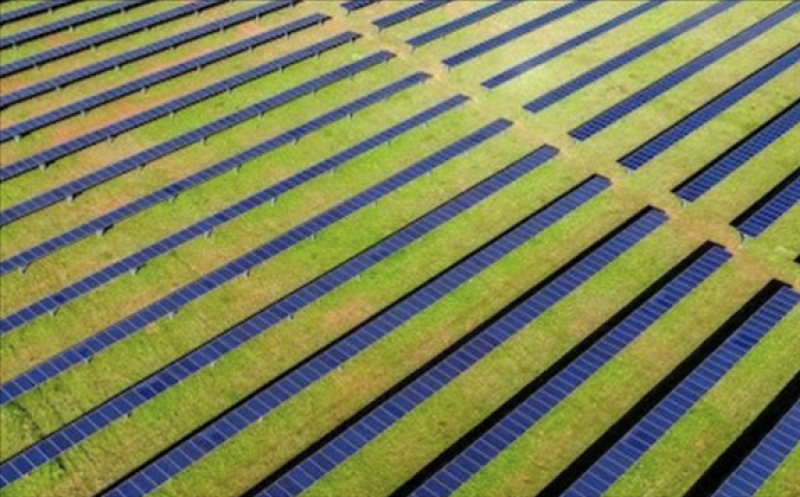New modelling shows that Europe could reach climate neutrality before 2050 through a 100% renewable energy scenario which would also see solar technology generate 60% of the European Union’s electricity by the middle of the century.

The findings of the new modelling were revealed in a new report published by European solar energy trade body SolarPower Europe and Finland’s LUT University. The report is described as “the first of its kind to model a fully renewable pathway to achieving climate neutrality for the European energy system” and presents three separate transition pathways with varying levels of ambition.
The modelled 100% renewables scenario would result in lower per unit energy costs which show that achieving climate neutrality by 2050 is more cost-effective compared to lower levels of ambition, with cumulative costs of achieving a 100% renewable energy system by 2050 working out as 6% lower than the cost of inadequate action resulting in only 62% renewable generation.
The report builds on LUT University’s work over the last decade, modelling various 100% renewable scenarios for various countries and regions, as well as a global model.
The new report provides three scenarios – a Laggard scenario which sees renewables’ share of European generation reach only 62% by 2050; a Moderate scenario which sees renewables at 100% by 2050; and a Leadership scenario which reaches 100% renewables by 2040.
Both the Moderate and Leadership scenarios successfully reduce greenhouse gas emissions by over 60% by 2030 (based on a 1990 level baseline), leading to zero greenhouse gas emissions by 2040 for the Leadership scenario, while the Moderate scenario manages this by 2050.
“A 100% renewable energy system enables the EU to become climate neutral before 2050, complying with the ambitious 1.5°C Paris Agreement target, and without resorting to carbon sinks,” said Aristotelis Chantavas, President of SolarPower Europe.
“This Leadership scenario will also trigger the sharpest decline in GHG emissions, down to zero in 2040. It also highlights the pivotal role of electrification to achieve a 100% renewable-based energy system, which will generate significant system efficiency gains and facilitate sectoral integration. With this cutting-edge report, we aim to contribute a new perspective to the discussion on how to enable a true European Green Deal.”
“A 100% renewable energy system in Europe is absolutely possible from a technical perspective,” added Dr Christian Breyer, Professor of Solar Economy at LUT University.
“It is also the most affordable and safest option to achieving climate neutrality in Europe by 2050. We have the clean energy technologies already, and now it is about developing the right policies to ramp up deployment. If we act now, we can limit climate change and provide a brighter future to the next generation.”
According to the LUT 100% renewables scenario, solar energy takes the lion’s share of the heavy lifting, generating more than 60% of the European Union’s electricity by 2050.
This would require at least 7.7TW of solar, while wind energy would provide around 33% of EU generation with 1.7TW. Importantly, however, solar’s dominant position only comes into effect after 2030, up to which point wind energy, with its high capacity factors, provides the highest shares of electricity generation.
“To achieve an energy system based on 100% renewables by 2050, where solar and wind are the main pillars of the energy transition, policymakers must focus on creating the right policy and financing frameworks to enable terawatt growth,” said Aurélie Beauvais, Policy Director of SolarPower Europe.
“As a first step, the EU should enshrine the objective of climate neutrality into law and review the EU 2030 GHG target to comply with the 1.5°C Paris Agreement.
By 2030, policymakers must prioritise renewable-based electrification, paving the way to the development of competitive and sustainable hydrogen solutions where low-cost solar and wind will act as prime energy carriers.
We also call for the establishment of a Clean Energy Package Implementation Body, to remove regulatory and administrative frameworks that remain the main barrier to the deployment of solar and renewables in Europe.”
These high level of ambition scenarios are reliant upon the prioritisation of renewable-based electrification by 2030, resulting in a region-wide electrification of 85%.
The modelling also relies heavily upon renewable hydrogen as a way to contribute towards the full decarbonisation of the heat and transport sectors, while batteries will provide the bulk of electrical storage (98%), backing up as much as 24% of European electricity demand. Heat pumps will also be important, emerging as a core part of a 100% renewable energy system by providing over 60% of heat generation by 2050.